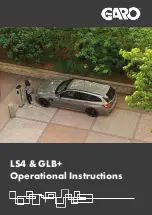
Four Wheel Steering, Driving in Bad Weather
At very slow speeds, the rear
wheels steer in the opposite
direction to the front wheels. This
helps in maneuvers such as parallel
parking and U-turns.
At higher speeds, the rear wheels
first steer in the same direction as
the front wheels. This aids with
changing lanes. As you turn the
steering wheel more, the rear
wheels return to straight ahead and
then steer in the opposite direction
to the front wheels. This gives
improved handling when going
around curves at highway speeds.
The rear wheels return to the
straight ahead position when you
turn off the engine. They also
return to straight ahead if you sit
still for more than two minutes
with the engine running. They
return to steering mode as soon as
you move the steering wheel or
start to drive away.
The 4WS system is self-checking.
If it detects a problem anywhere in
the system, it turns on the 4WS
indicator on the instrument panel
(see page
35
) and points the rear
wheels straight ahead. Your car
will then drive like a conventional
car without 4WS.
Driving in Bad Weather
Rain, fog, and snow conditions re-
quire a different driving technique
because of reduced traction and
visibility. Keep your car well-
maintained and exercise greater
caution when you need to drive in
bad weather. The cruise control
should not be used in these condi-
tions.
Driving
Main Menu
Table of Contents
▲
▼
















































